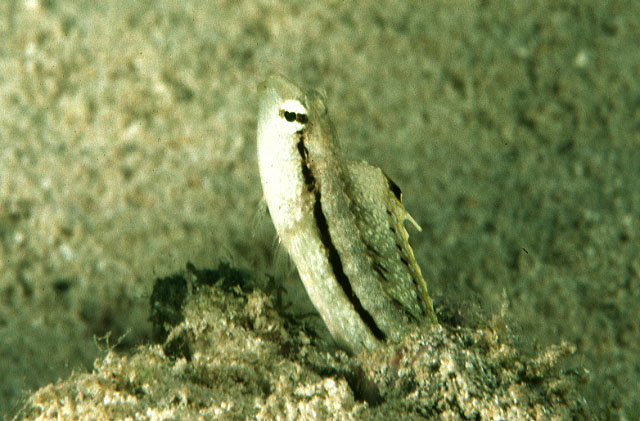| Blenniidae (Combtooth blennies), subfamily: Blenniinae |
| 7.5 cm TL (male/unsexed) |
|
reef-associated; marine; depth range 0 - 12 m |
| Indo-Pacific: East Africa to the Line and Society Islands, north to Mariana Islands, south to the southern Great Barrier Reef; throughout Micronesia. Likely at Seychelles (Ref. 1623). |
|
Dorsal spines (total): 10-11; Dorsal soft rays (total): 14-16. Has a tall dorsal fin and small tufts below the chin (Ref. 48636). Resembles P. thepassii and P. variabilis but usually has fewer total dorsal fin elements (Ref. 37816). |
| Adults occur solitary (Ref. 90102) usually over sandy areas of reef flats and shallow lagoons. Small juveniles were found below the upside-down jelly Cassiopea that moves over sandy substrates providing safe travel (Ref. 48636). Eggs are attached to the substrate via a filamentous, adhesive pad or pedestal (Ref. 94114). Females nest in empty mollusk shells (Ref. 1602). Larvae are planktonic, often found in shallow, coastal waters (Ref. 94114). |
|
Least Concern (LC); Date assessed: 25 March 2009 Ref. (130435)
|
| harmless |
Source and more info: www.fishbase.org. For personal, classroom, and other internal use only. Not for publication.

